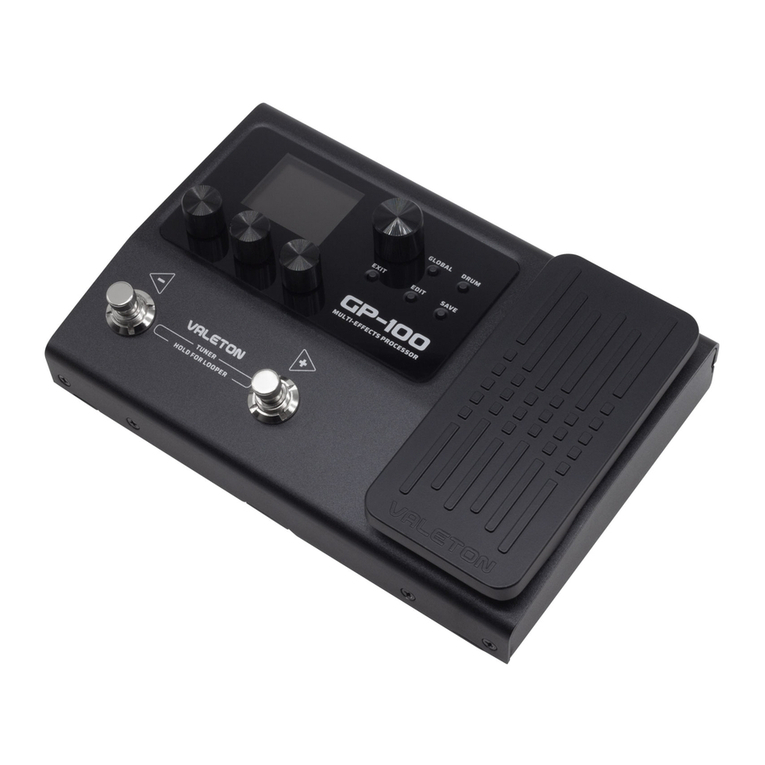
Contents
Welcome·············································1
Attention············································1
Overview············································2
Panel Introduction·······························3
Getting Started···································4
Screen Introduction·····························5
Main Display Screen·································5
TUNER·························································5
LOOPER······················································6
DRUM··························································6
EXP Pedal·················································7
Patch Setting·······································7
Edit Menu·········································7
Editing a Module·······································7
Managing the Signal Chain······················8
Patch Settings···········································8
Save Menu··················································9
Global Settings··································9
Input/Output············································10
USB Audio·················································10
Footswitch················································11
EXPCalibrate··········································12
EXP2/Footswitch··································13
MIDI···························································13
Display······················································14
Auto CABMatch······································14
Global EQ···················································14
About·························································15
Factory Reset···········································15
Compatible software·························16
Application Scenarios·······················17
With full-range speaker devices············17
With guitar amps (INPUT jack)················17
With guitar amps (using FX Loop to pre-
position the GP-200)··································18
With guitar amps (using FX Loop to post-
position the GP-200)··································18
With guitar amps (using FX Loop to run
the 4 cable method)····································19
Audio Studio (for livestreaming)···········19
EFFECT LIST·····································20
PRE···························································20
WAH··························································23
DST···························································23
AMP··························································27
NR····························································36
CAB··························································37
EQ·····························································39
MOD·························································39
DLY··························································42
RVB··························································44
VOL··························································44
Drum Rhythm List··························45
MIDI Control Information List···········48
Troubleshooting····························50
Technical Specifications··················51




























